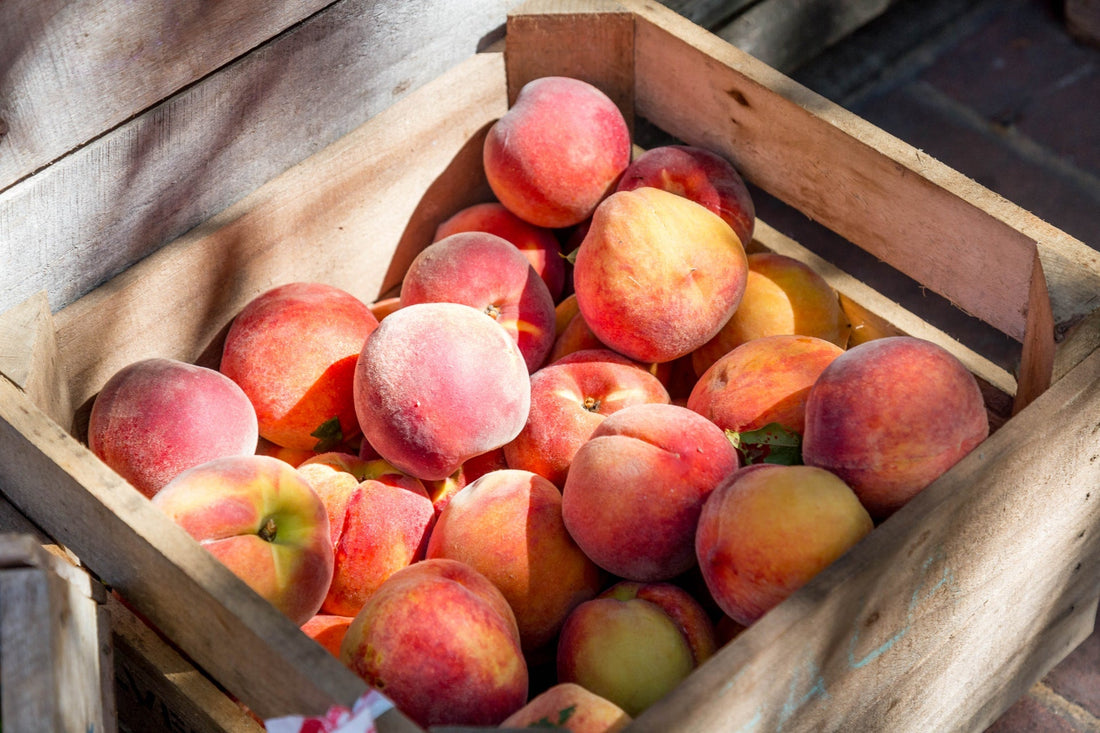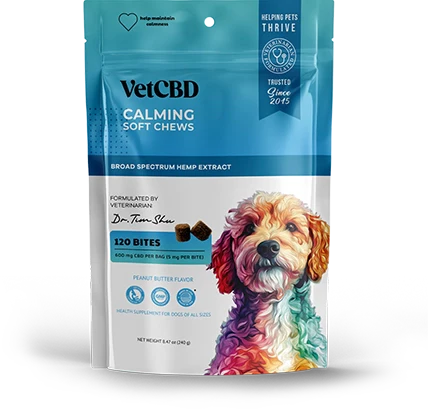
Can Dogs Have Peach?
Share
If you just picked up a dozen beautiful peaches at the peak of peach season, you’re likely very excited to share them with your family and use them in recipes. Your dog is a part of your family, and it’s natural to want to share the experience with them. Peaches are sweet and delicious, and there’s a good chance your dog will enjoy them just as much as you do.
Here’s what you need to know about sharing peaches with your dogs safely and appropriately.
What Are the Health Benefits of Peaches?
Peaches are low in calories and fat. They’re loaded with immune-boosting vitamin C and contain a substantial amount of vitamin A, which promotes normal eyesight and skin health. They also contain small amounts of fat-soluble vitamins E and K. Peaches contain important trace minerals like folate, potassium, zinc, copper, niacin, magnesium, and manganese. In short, peaches are little orbs of vitamins and minerals. Not only do they taste delicious, but they provide many of the things both humans and animals need to support the healthy function of their bodies.Can Dogs Have Peach?
Dogs can have fresh peaches in small amounts. Although peaches do contain plenty of beneficial vitamins and nutrients, they also contain a lot of naturally occurring sugar. Dogs are carnivores by nature, and they don’t have any need for the sugar in foods like fruit, even if it’s natural sugar. If your dog likes peaches and their digestive system seems to tolerate them, there’s nothing wrong with occasionally giving your dog a little piece of your peach.Can Dogs Have Canned or Frozen Peaches?
Your dog should only have fresh, ripe peaches. Frozen sliced peaches may be a fun treat for a hot day, provided that peaches are the only thing on the ingredients list. Many of the ingredients used to preserve peaches aren’t good for your dog. Canned peaches and peaches that come in single-serving cups are preserved in syrup. This means they have added sugar. Your dog should never have added sugar in any form. Peaches already contain natural sugars, which should be limited as a part of your dog’s healthy diet. Canned peaches and fruit cups turn something that’s already a naturally sweet treat into a heavily sweetened unhealthy indulgence. Plus, sugar-free versions of these treats may contain xylitol, a sugar substitute that is toxic to dogs.How To Feed Your Dog Peach
You should never give your dog an underripe peach or a peach that’s nearly rotten. If the peach isn’t good or safe for you to eat, it isn’t good or safe for your dog to eat. Peaches that are soft and bruised are better used as compost for your garden. If the peaches aren’t ripe yet, you can put them in a produce bag to speed up the ripening process by a few days. Before you give your dog a peach, wash the outside (most experts recommend skipping produce washes when sharing fruits and veggies with your pup). Dogs are susceptible to many of the same things you are, and pesticides on the exterior of a fruit can be just as harmful to animals as they can be to people. You can and should leave the skin on the peach, as it contains beneficial fiber. You do need to remove the pit from the peach because it poses a significant choking hazard to your dog. Even if your dog is very big and the peach pit is very small, your dog can still crack or break their teeth if they attempt to bite into a whole peach. Then, cut the peach into slices. A small dog can typically have a small peach slice. A large dog can typically have about a quarter of a peach as a snack. Always make sure you’re feeding your dog proportionately according to their size.How Often Can You Feed Dogs Peach?
If you’re choosing a high-quality dog food prepared from fresh ingredients, that food is designed to meet your dog’s dietary needs. Your dog won’t need any supplemental foods or snacks to help them meet their nutritional goals. Observe the 90/10 rule when feeding your dog treats. About 90% of your dog’s diet should be composed of high quality dog food, and the other 10% of their diet can come from treats. One or two small treats a day won’t do your dog any harm as long as the treat is reasonable in size and safe for your dog to eat. Peach, like any other fruits or vegetables safe for dogs, should count as a treat. If your dog is on a special diet or is under direct supervision of a vet for a health condition, you should always ask your vet before introducing new foods into your dog’s diet. A vet will likely advise strongly against giving fruit to dogs with conditions like diabetes, as fruit is high in sugar and may provoke a response within your dog’s body. Dogs that are otherwise healthy can occasionally enjoy some fruits. You should also monitor your dog after they consume peaches. Any food has the potential to cause gastrointestinal upset. If your dog eats peach and you notice nausea, vomiting, diarrhea, changes in appetite, or changes in potty habits, stop giving your dog peach. Your dog is likely more suited to protein-based treats. If your dog seems to tolerate peach well and enjoys the way it tastes, you can use peach as a special treat as long as your veterinarian doesn’t have any objections.How To Make Peach Dog Treats
Peaches have a very soft consistency that makes them difficult to bake with in substantial amounts. They’ll fall apart, which is what makes them excellent filling for tarts, cobblers, and pies. Your dog can’t have human desserts, so why not make them a delicious doggie dessert? You only need two ingredients to make your dog their very own peach ice cream.- 2 cups unsweetened plain greek yogurt
- 1 peach


